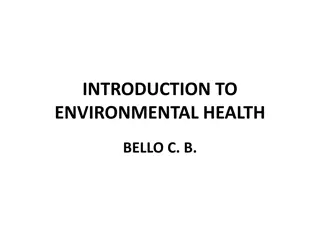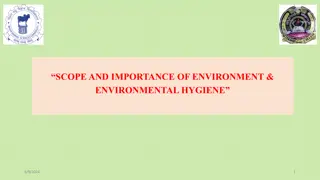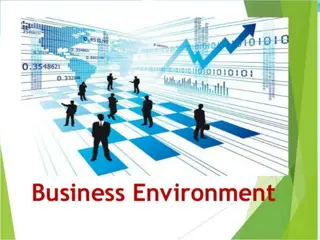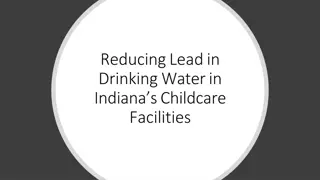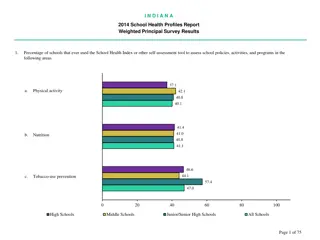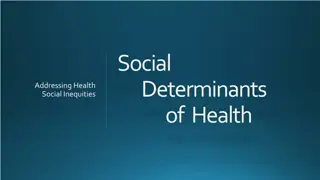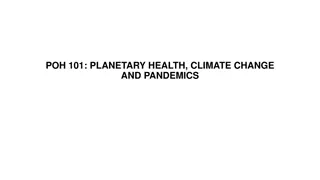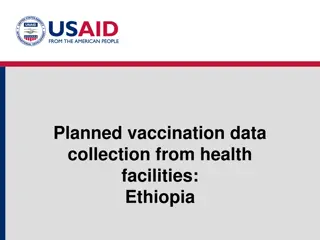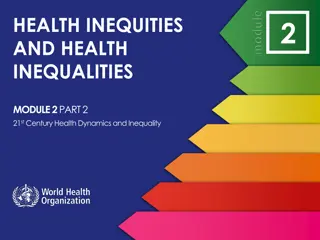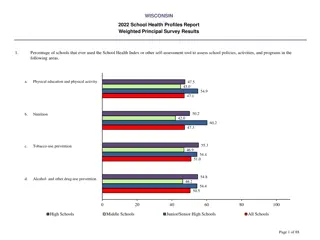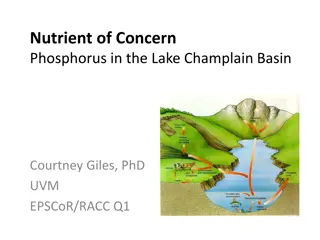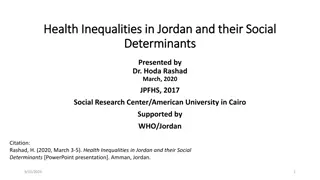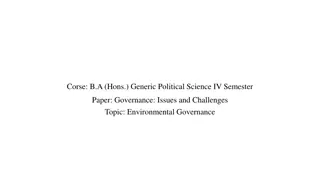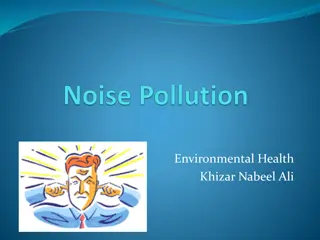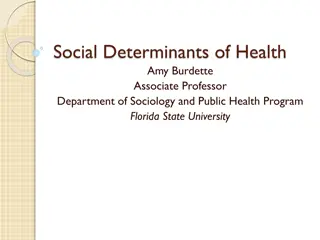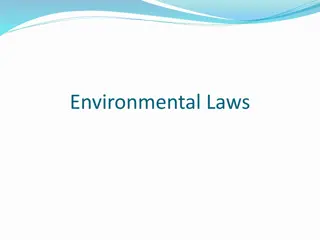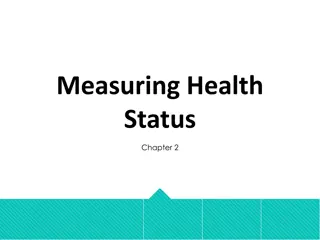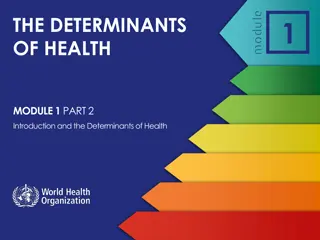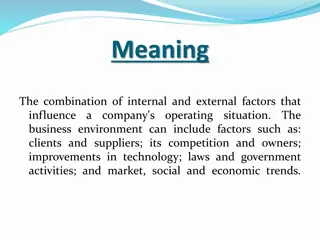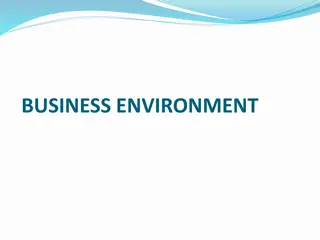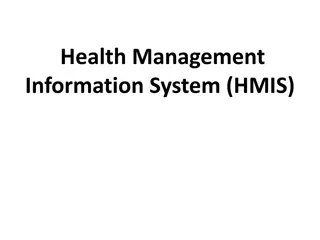Understanding Smog and Its Impact on Health and Environment
Smog is a result of air pollution caused primarily by the burning of fuels in industries and vehicles. It is formed when sunlight reacts with pollutants in the atmosphere. There are two main types of smog: sulfurous and photochemical. Smog poses serious health risks, leading to respiratory issues, asthma aggravation, lung damage, and even premature deaths. Reasons for smog include the use of coal in fuel production, vehicular emissions, and burning of agricultural materials. Addressing these factors is crucial to combat the harmful effects of smog on both human health and the environment.
Download Presentation

Please find below an Image/Link to download the presentation.
The content on the website is provided AS IS for your information and personal use only. It may not be sold, licensed, or shared on other websites without obtaining consent from the author. Download presentation by click this link. If you encounter any issues during the download, it is possible that the publisher has removed the file from their server.
E N D
Presentation Transcript
SMOG & RESPONSIBILITY OF MANUFACTURING INDUSTRY Muhammad Atif 6th Dec 2021
What is SMOG ? The term "smog" was first used in the early 1900s to describe a mix of smoke and fog. It is commonly used to describe the pall (cloud/blanket) of automotive or industrial origin that lies over many cities. HowSmogis Formed? The atmospheric pollutants or gases that form smog are released in the air when fuels are burnt. When sunlight and its heat react with these gases and fine particles in the atmosphere, smog is formed. It is purely caused by air pollution.
SMOG TYPES Two distinct types of smog are recognized as: Sulfurous smog Sulfurous smog, results from a high concentration of sulfur oxides in the air and is caused by the use of sulfur-bearing fossil fuels, particularly coal. This type of smog is aggravated by dampness and a high concentration of suspended particulate matter in the air. Photochemical smog Occurs most prominently in urban areas that have large numbers of automobiles & industry. It requires neither smoke nor fog. This type of smog has its origin in the nitrogen oxides and hydrocarbon vapors which then undergo photochemical reactions in the lower atmosphere in presence of sunlight. The resulting smog causes a light brownish coloration of the atmosphere, Today, most of the smog we see is photochemical smog.
HEALTH IMPACTS OF SMOG HEALTH IMPACTS OF SMOG Coughing, allergies and irritation of the eyes, chest, nose and throat: a) Coughing, allergies and irritation of the eyes, chest, nose and throat: Aggravation of asthma Breathing difficulties and lung damage: Premature deaths because of respiratory and cancer diseases: Birth defects and low birth weights: Smog is highly linked to birth defects and low birth weight. Pregnant women who have been exposed to smog have had babies with birth defects.
REASONS OF SMOG REASONS OF SMOG Using Coal as a Fuel The use of coal as fuel in heating or power-producing plants discharges high concentrations of sulfur oxides in the atmosphere. The effects are worsened by high levels of suspended particulate matter in the air and dampness. Vehicular and Industrial Emissions Emissions from the transportation sector resulting from fossil fuel. Most of the smog formed in large cities is a result of traffic emissions. The industrial processes employ a large amount of fossil fuels and resources (Energy) that need to be extracted for the production of materials and goods. Resulting in release of oxides of nitrogen, volatile organic compounds (VOCs), carbon monoxide, fumes, sulfur oxides and hydrocarbons, which makes up smog.
REASONS OF SMOG REASONS OF SMOG Burning of Agricultural Material In some countries like India & Pakistan, the burning of the agriculture field can also contribute to the smog problem. To get rid of old crops and waste material generated from farming practices, farmers often burn it since it is a convenient way to do so. The combustion of agricultural materials containing ammonia, pesticides and fertilizers usually implies the emission of gases into our atmosphere, which turns into smog in later stages. Overpopulation & Excessive Consumption The world population has been significantly growing over the past decades. This also implies a huge increase in consumption and also in emissions. Since the industrial revolution, the production with the help of machines significantly dropped the unit prices for material goods and our consumption levels also vastly increased with that. Since all these goods have to be produced in industrial processes, this also implies the emission of harmful gases into our atmosphere. Construction Activities Smog can also occur due to construction activities. A large amount of dirt and dust particles enter the air, especially in areas with a high construction density. This, in turn, can lead to the formation of smog and related adverse effects.
Responsibility of Industry & Solutions to Smog Pollution Responsibility of Industry & Solutions to Smog Pollution Opting for Renewable Energy By choosing renewable energy, it helps in the reduction of emissions from power generating plants that heavily depend on fossil fuel. In other words, the use of renewable energy not only reduces environmental impacts but also trims down the presence of smog, causing pollutants in the air. Reducing and Managing Industrial & Vehicular Emissions Industries & Vehicles and constitute the largest contributors to smog-forming pollutants. The best way to reduce smog is, therefore, to take the lead in managing gaseous emissions. For industries, the use of renewable energy sources and the manufacturing of environmentally friendly consumer products (which do release VOCs, Hydro-Carbons, SOx, NOx, Cox) are fundamental. Increasing Energy Efficiency and Conserving Energy Increasing energy efficiency and, at the same time, conserving energy leads to reduced gaseous emissions into the atmosphere. A capable and productive energy management system can go a long way in reducing smog. Buy energy-efficient devices instead of energy-intensive ones to lower energy demand and thus also reduce the smog problem.
Responsibility of Industry & Solutions to Smog Pollution Responsibility of Industry & Solutions to Smog Pollution Use of Environmentally Friendly Consumer Products The use of household products that have high levels of volatile organic compounds should be completely avoided. The use of environmentally friendly consumer products such as eco-friendly paints, paper, sprays, solvents and plastics, therefore, provides a basis for addressing smog pollution. Buy unpackaged food directly from local farmers or organic food stores instead of conventional stores to further improve your ecological footprint since the transportation of goods implies the use of fossil fuels. The disposal of packaging also exacerbates significant air pollution and smog problem. 3Rs- Reduce, Reuse and Recycle Reduction in consumption means less production of our material things, and reduced use of resources and fossil fuels that lead to less air and smog pollution. Similarly reuse and recycle will also show you a different perspective of life apart from wasteful material consumption and excessive waste generation so that you can contribute your part for a reduction in smog.
Responsibility of Industry & Solutions to Smog Pollution Responsibility of Industry & Solutions to Smog Pollution Smog Detection and Monitoring Systems As much as smog is easily visible when it s present in the atmosphere, the use of appropriate smog detectors and monitoring systems can act as early warning systems. Installing monitoring equipment that consistently records the amount of emission and particulate matter in the air. One such strategy is the Air Quality Index (AQI) which is used for reporting and monitoring the relative concentrations of common air pollutants and ground-level ozone. Nonetheless, this measure only monitors the levels of the smog-causing pollutants in the air and subsequently helps in putting in place strategies that can cut back emissions and air pollution. Preventive measures are the best in the very first place.
Please Think & Act Wisely Please Think & Act Wisely Thank You Thank You



